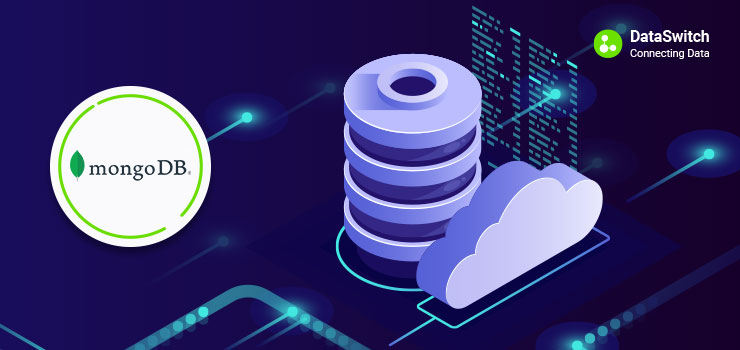
Why It’s Time to Modernize Your Traditional RDBMS Database to MongoDB
Why It’s Time to Modernize Your Traditional RDBMS Database to MongoDB
According to Gartner, the future of the DBMS market lies in the cloud – cloud DBMS revenue is estimated to contribute 68% of the total growth in market revenue.
Why is an Inevitable DBMS Shift Underway?
The ongoing technological evolution has exponentially increased the amount of digital data generated by a business and the rate is increasing by 55% to 65% every year. The majority of this data is unstructured data originating from web applications, mobiles, tablets, social media and so on.
One of the primary reasons necessitating the modernization of the previous generation of Relational Database Management Systems (RDBMS) is that they were designed to store structured data. They fall short when it comes to unstructured data storage. Although such databases have served as the crux of data management technology for 30+ years, it is now critical for organizations to be able to store unstructured data in a system that is cloud-enabled. Mining this huge volume of data can serve as the foundation for improving business through more informed decisions.
In addition, the evolution of how applications are built has undergone a change so that having an outdated RDBMS can hinder scalability and business agility, while placing a burden on budgets.
NoSQL databases like MongoDB have increased in popularity to cope with modern database demands. They were originally designed for metadata storage, web applications and social media analytics.
These compelling factors are prompting many business to transition from traditional RDBMS to MongoDB with data migration and modernization. According to Gartner by 2022, 75% of all databases will be on the cloud – either by direct deployment or through data migration and modernization.
Let’s explore the advantages of data modernization using MongoDB.
Adapt to Demands
Cater to modern-day demands using MongoDB for abilities that are essential to digital businesses:
- Adapt to new computing environments such as cloud.
- Real-time performance with a uniform UX across devices and interfaces.
- Handle complex data types including media files, text, and so on.
- Scale as required to handle big data.
- Support swift, agile development.
- Enable flexible data architecture such as schema-less design.
Modernizing your organization’s underlying databases will make your apps more reliable, secure, scalable, and easier to manage.
Performance & Scalability
Due to difficulties in scaling old-school RDBMS, IT teams explored alternatives such as clusters and RAC. But these alternatives could not handle the challenge of scalability. The issue lies in the fact that SQL transactions and operations across multiple nodes simply do not scale well.
On the other hand, a modern, open source, document-oriented database such as MongoDB provides the ability to scale easily. MongoDB enables:
- Faster in-memory performance as data is read/written to RAM.
- Horizontal scalability that utilizes cloud infrastructure and commodity hardware to tackle spikes in data volume or throughput.
- Flexible architecture that easily supports any alterations to data models.
- A convenient document data model where data is stored in a structure that easily maps to objects in modern programming languages.
- Rich queries that facilitate better search and retrieval. This includes text search indexes, native MapReduce and aggregation frameworks.
- Drivers that help applications interact with the database by making use of native libraries.
- Extremely high availability that supports native replication with automatic failover to secondary nodes.
Successful application development hinges on database performance. While old-school RDBMSs require in-depth performance-engineering knowledge, modern NoSQL databases such as MongoDB utilize RAM extensively to optimize performance of the database. It is much faster to read data from memory than from disk. So, MongoDB utilizes files that map memory to accelerate and optimize read functions. MongoDB can handle a surge in scale as well. When the volume of data accessed often surpasses the capacity of a single machine, MongoDB makes use of horizontal scaling across multiple servers via automatic sharding. This functionality is the crucial factor that allows MongoDB to scale on-demand.
Schema
MongoDB has the advantage of schema-less database design, whereas an RDBMS has a clearly defined schema structure for the database. Data migration and modernization to this schema-less structure facilitates many operational improvements.
Cost
The majority of the in-demand RDBMSs require licensing. Moreover, they are not open source. MongoDB has the advantage on both counts – it is free and open source.
Performance
The typical RDBMS is optimized for normalized structure. On the other hand, MongoDB is optimized for read-intensive key value stores.
Overcome Technical Obstacles in Data Modernization
Migrating from an old-school RDBMS to a modern database like MongoDB requires the right knowledge and skillsets. Many companies run into obstacles in transitioning to modern databases, as they are often unaware of the degree of complexity in data migration and modernization. Even if companies are aware of the complexity, they may not have access to the right skillsets. Without data modernization expertise, many issues such as data structure differences, insufficient knowledge and code complexity pose major challenges to data modernization initiatives.
DataSwitch provides Intuitive, Predictive and Self-Serviceable Schema redesign from 3NF to Document Model, as well as fully automated data migration & transformation based on redesigned schema and no-touch code conversion from legacy data scripts to modern, MongoDB APIs.
You can count on DataSwitch for cost-effective, accelerated solutions for digital data transformation and modernization through MongoDB. Our no code and low code solutions along with enhanced automation, cloud data expertise and unique schema generation accelerates time to market. Get your enterprise’s cloud-driven data modernization journey running at light speed with business continuity ensured. Book a demo to know more.



